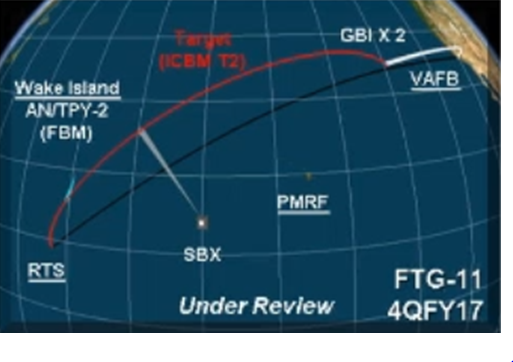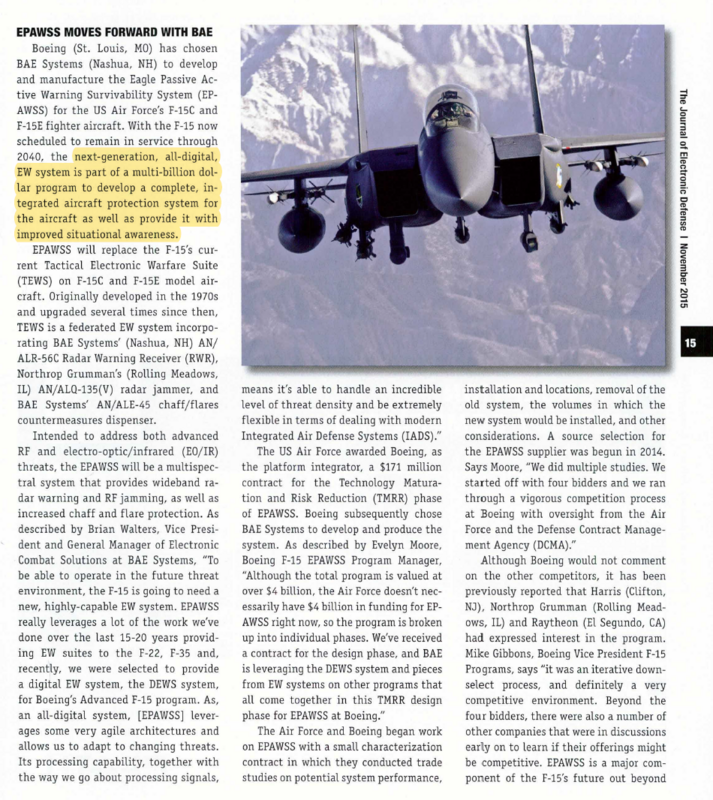
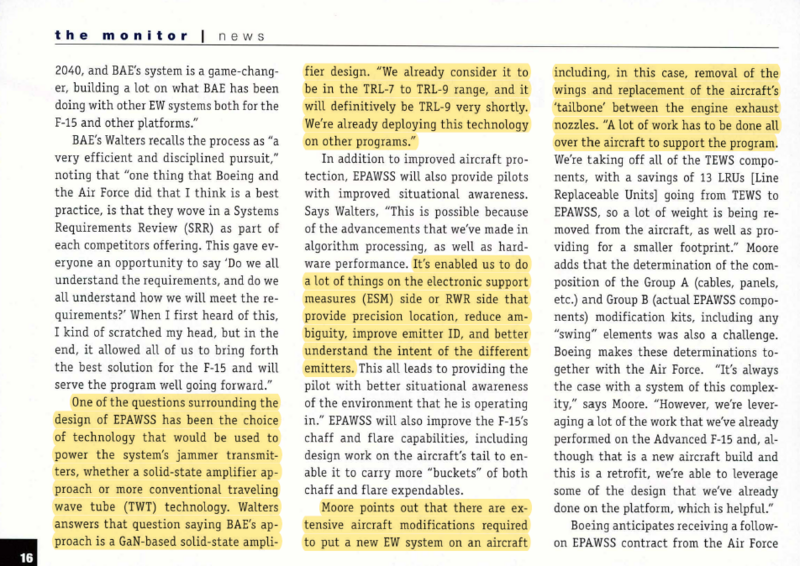


The US Naval Air Systems Command (NAVAIR) has awarded Raytheon Missile Systems a USD33 million contract modification that will fund engineering and manufacturing development (EMD) of the Miniature Air Launched Decoy – Navy (MALD-N).
Announced on 30 January the 24-month EMD phase follows on from a USD46.6 million technical maturation and risk reduction (TMRR) contract placed by NAVAIR in September 2018.
Evolved from the US Air Force’s (USAF’s) ADM-160C MALD-J system – a subscale turbojet-powered decoy/jammer with a maximum range of about 500 n miles – the MALD-N programme is intended to address the US Navy’s (USN’s) requirement for a network-enabled stand-in jammer to support suppression of enemy air defences. Stand-in jamming employs a combination of tactics and techniques whereby an unmanned aerial vehicle, equipped with an electronic attack (EA) payload, is deployed in close proximity to the threat radar and within the lethal engagement envelope of associated surface-to-air missiles. In this way, it provides screening for other platforms.
The EMD phase for MALD-N will be followed by low-rate initial production (LRIP) during fiscal year 2021 (FY 2021) and FY 2022 (LRIP covers an estimated quantity of 250 MALD-N weapons). MALD-N is scheduled to achieve early operating capability on the F/A-18E/F Super Hornet in 2021, followed by initial operating capability in 2022.
While MALD-N air vehicle development is being single-sourced to Raytheon, the development of the EA payload has been split off and is to be the subject of a separate competition. According to NAVAIR, the successful EA payload contractor will in due course become a subcontractor to Raytheon.
The MALD-N development is leveraging the recent MALD-X capability demonstrator programme, for which Raytheon was awarded a USD34.8 million contract by the USAF in March 2016. Funded through the Special Capabilities Office at the Office of the Secretary of Defense, MALD-X was set up to demonstrate capabilities potentially applicable to the USN’s MALD-N programme and at the same time establish an upgrade path for USAF’s existing MALD-J inventory.
The MALD-X air vehicle system embodied a new modular front end, an improved EA payload, a datalink, and a low-altitude capability. Flight demonstrations were performed in August 2018 at the USN’s Point Mugu Sea Range off California.
The USN intends to buy the first Columbia-class boat in FY 2021 and the second in FY 2024. It plans to finish off the acquisition with annual buys of one ship per year from FY 2026 through to FY 2035. The first submarine is slated to be delivered in FY 2027 and the second in FY 2030. Then it will be one per year from FY 2032 through to FY 2041.
There is an especially close margin between the retirement of the Ohio class and the arrival of the Columbia class in part because the USN has pushed the new SSBN programme into the future to pay for other platforms and systems. Even with the emphasis on completing the Columbia class to schedule, there is still some risk. The USN acknowledges that the SSBN force would decline to 11 boats from FY 2030 through FY 2036, dropping to 10 between FY 2037 and FY 2040. The fleet should increase back to 11 boats in FY 2041 and then up to 12 in FY 2042.
Despite the importance of the SSBN mission and the potential risk to meeting strategic nuclear deterrence requirements due to the reduction from 11 or 10 boats between FY 2030 and FY 2041, USN officials said they can fulfill the mission. They noted that during those leaner fleet years, all of the SSBNs in service are to be operational; none would be stuck pier side underdoing the long mid-life overhauls. However, the greater risk would come if one of the ships must be pulled out of operations for unscheduled long-term maintenance or some other unforeseen issue.
From the start, the Columbia class is to be designed for a 42-year service lifespan but it will require no mid-life nuclear refueling like the Ohio class. The USN will equip the Columbia-class boats with a life-of-the-ship nuclear fuel core. However, the new submarines will still need a mid-life overhaul of systems and equipment.
The Columbia-class SLBM launch tubes will be the same size as those on the Ohio – a diameter of 87 inches and a length sufficient to accommodate a D-5 SLBM – but its 13 m beam will be slightly larger than that on the Ohio class. The lengths will be the same for both boats, 170.7 m. However, the Columbia class will only have 16 SLBM launch tubes, whereas Ohio had 24 tubes.
The Columbia class’s submerged displacement is to be 18,883 tonnes, greater than the Ohio class’s 17,033 tonnes.
Virginia investment
The FY 2019 request includes about USD7.3 billion for the Virginia class, including USD7.2 billion for two Block V Virginia-class submarines and related advance procurement and economic order quantity funds, which are part of the FY 2019-23 multiyear procurement plan.
The Block V hulls will include improvements in acoustic stealth and on-hull sensors. The second hull in FY 2019 will include the first VPM and a hull section with four additional payload tubes capable of carrying an additional 28 Tomahawk cruise missiles, which increases the Tomahawk per-ship capacity from 12 to 40.
Virginia-class boats to be procured in coming years with VPM have an estimated unit procurement cost of about USD3.2 billion, while non-VPM
ships acquired in recent years cost about USD2.7 billion each.
The USN may have another option to make up for SSGN firepower, which is to keep the Columbia-class strategic submarine line running even after the service gets all 12 of the planned boats.
The navy wants to keep the line going not only to possibly build more strategic submarines – should the US Strategic Command (STRATCOM) determine that more of the boats are needed – but also to potentially develop a new kind of undersea vessel, Rear Admiral John Tammen, director of Undersea Warfare, said on 8 November 2018 during the Naval Submarine League symposium.
“If STRATCOM needs more than 12, we can produce more than 12,” he said. “If STRATCOM doesn’t need more than 12, we’re looking at what we call the large-volume host platform. We haven’t nailed down the concept yet, but we’ll take that centre section; there will be payload volume. We’ll have the ability to host vehicles aboard inside that centre section.”
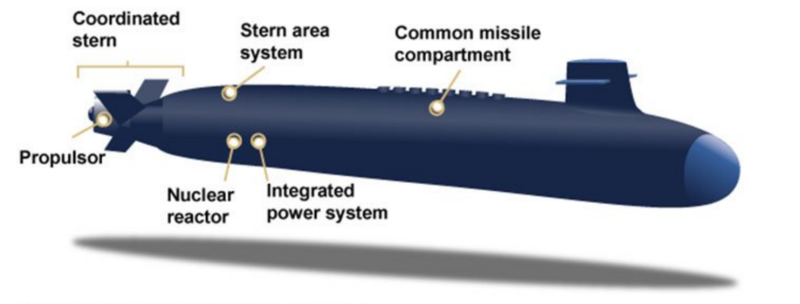

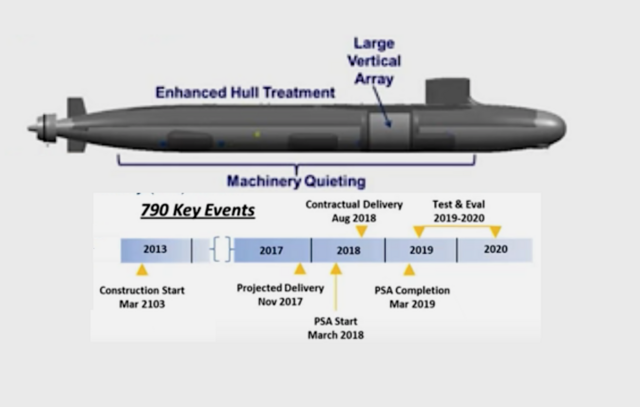

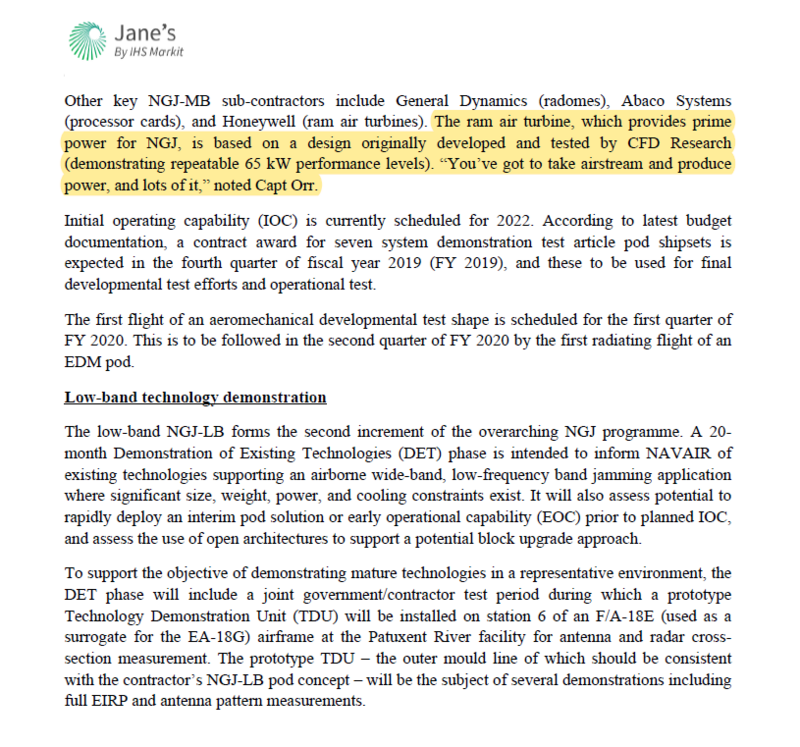
Essex has concluded its ME deployment hence probably why they are now talking about it and providing these details. More info will likely be released once they are back..
Members of Marine Fighter Attack Squadron 211 flew 1,200 combat hours over Iraq and Syria, "making up a considerable portion of the ordnance that was dropping in theater," said Col. Chandler Nelms, commander of the 13th Marine Expeditionary Unit.
The Marines spent more than seven months deployed to the Pacific and Middle East. The F-35B detachment was assigned to the 13th MEU, which operated from aboard the amphibious assault ship Essex. It was the first time the Marine Corps' variant of the stealth jet, which can take off and land vertically, deployed to the Middle East.
The F-35B's first combat strike was in Afghanistan in September, where the Marine pilots were flying close-air support missions, said Lt. Col. Kyle Shoop, VMFA-211's commanding officer.
From there, they flew more than 50 days' worth of close-air support and defensive counter-air missions in Iraq and Syria.
"Every day, [the pilots] were supporting over six hours of time in theater," Shoop said.
"We were aware they were airborne," Shoop said. "There are some established de-conflictions that are already set up between Russian and U.S. forces. They were all adhered to, but we were aware."
The F-35Bs were able to give troops on the ground more information than would have been possible in the AV-8B Harrier jump jet, which the Joint Strike Fighter will eventually replace. Its sensors are better in poor weather, Shoop said.
The Marines ended up flying the F-35B about twice as much as the Harrier flew on past deployments, Nelms said.
"A conservative estimate is the F-35 flew 100 percent more hours on this deployment than a typical deployment for a Harrier squadron," he said. "When you consider that their readiness was 75 percent or better ... while doubling the amount of flight hours being flown, it's a real testament to the aircraft and the maintainers."
The F-35B pilots weren't the only members of the MEU supporting the fight against ISIS. A CH-53E Super Stallion heavy-lift helicopter provided airlift in Iraq, Nelms said, and an artillery battery deployed to Syria with M777 howitzers.
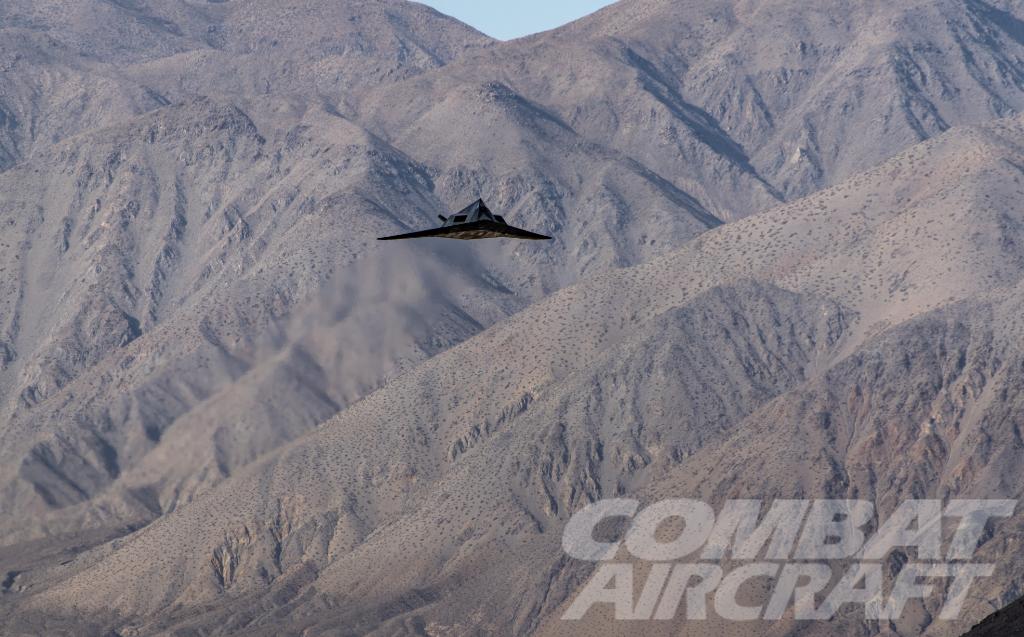
After eight months at sea with a squadron of F-35B Lighting II Joint Strike Fighters, the Marines and the Navy are seeing how the next-generation aircraft will expand the effectiveness of U.S. amphibious forces.
The Essex Amphibious Ready Group and 13th Marine Expeditionary Unit are nearly back to California after deploying in July to the Pacific and Middle East. The ARG/MEU’s return – with the embarked Wake Island Avengers of Marine Fighter Attack Squadron (VMFA) 211 – marks the end of the first combat deployment of the JSFs, 13th MEU commanding officer Col. Chandler Nelms told USNI News by phone Friday from USS Essex (LHD-2).
“It’s got the short-takeoff capability of the Harrier, the speed and payload of a (F/A-18) Hornet, and it’s got the forcible entry options that stealth technologies give us,” Nelms said.
“Because of its air-to-air capability and its sensors for air-to-ground capabilities, it also provides a new dynamic for the ARG commander, for the commodore, while we’re out conducting blue-water operations or littoral operations or defending the ARG. … On its first deployment, it was kept very busy.”
“[It] increases battlespace awareness with data fusion and the ability to share information with the ships and the ships’ combat control system,” Capt. Gerald Olin, Amphibious Squadron 1 commander and Essex ARG/MEU commodore, told USNI News from Essex. “So it’s really an extension of our sensors, and it also brings to the table a greater increased lethality than what we had with previous generation aircraft.”
“The aircraft and its integration with the ship and integration with the mission exceed my expectations,” Lt. Col. Kyle Shoop, who commands VMFA-211, told USNI News. “Just in our time with 5th Fleet, we supported over 50 days of combat for over 1,200 flight hours … didn’t drop a single line of FRAG or combat support.”
At times, the jets flew off Essex for long missions, “and we kept employing ordnance in both theaters,” Shoop said, referring to Afghanistan for Operation Freedom Sentinel and Syria and Iraq for Operation Inherent Resolve.
“The jet itself proved to be very reliable. Throughout that whole time period, Marines did a great job keeping it serviceable,” he said. “We were gone away from the ship for an extreme amount of time – a lot of times over five, six hours away from the ship – and they’d turn them around that night to fly again the next day. So that went really well.”
The F-35B performed “like we expected,” Shoop added. “Some of the sensors onboard would do better than, say, a Harrier would through adverse weather or things like that. So it proved to be pretty versatile.”
The F-35B crews operated from Essex for nearly all missions, except when the ship pulled into port for a mid-deployment repair.
“We did step off the ship during that time to keep employing the aircraft in theater, so we did a short period of time ashore,” Shoop said. “We were used for defensive counter-air in-theater, as well as sustaining alerts on the ship, able to launch with air-to-air weapons,” he added.
Shoop said squadron Marines were excited and appreciated the significance of the jet’s first operational combat deployment.
“They knew there were a lot of eyes outside of this ship that were on them and how they were performing,” he said. “So they were very aware of that and knew they needed to be extra diligent the whole time.”
The busy flight schedule and maintenance demands have provided more data and lessons about the F-35B.
“This was a great deployment for us, a great experience especially with being a part of a new, revolutionary aircraft and figuring out how we’re going to use (the F-35B),” Olin said. “There’s a lot of lessons that we learned and to be learned.”
SAN DIEGO (NNS) -- The Commander, Naval Air Forces and the U.S. Marine Corps Deputy Commandant for Aviation jointly announced that the aircraft carrier variant of the Joint Strike Fighter, the F-35C Lightning II, met all requirements and achieved Initial Operational Capability (IOC).
The Feb. 28 announcement comes shortly after the Department of the Navy’s first F-35C squadron, Strike Fighter Squadron (VFA) 147, completed aircraft carrier qualifications aboard USS Carl Vinson (CVN 70) and received Safe-For-Flight Operations Certification.
In order to declare IOC, the first operational squadron must be properly manned, trained and equipped to conduct assigned missions in support of fleet operations. This includes having 10 Block 3F, F-35C aircraft, requisite spare parts, support equipment, tools, technical publications, training programs and a functional Autonomic Logistic Information System (ALIS).
Additionally, the ship that supports the first squadron must possess the proper infrastructure, qualifications and certifications. Lastly, the Joint Program Office, industry, and Naval Aviation must demonstrate that all procedures, processes and policies are in place to sustain operations.
“The F-35C is ready for operations, ready for combat and ready to win,” said Commander Naval Air Forces, Vice Admiral DeWolfe Miller. “We are adding an incredible weapon system into the arsenal of our Carrier Strike Groups that significantly enhances the capability of the joint force.”
”
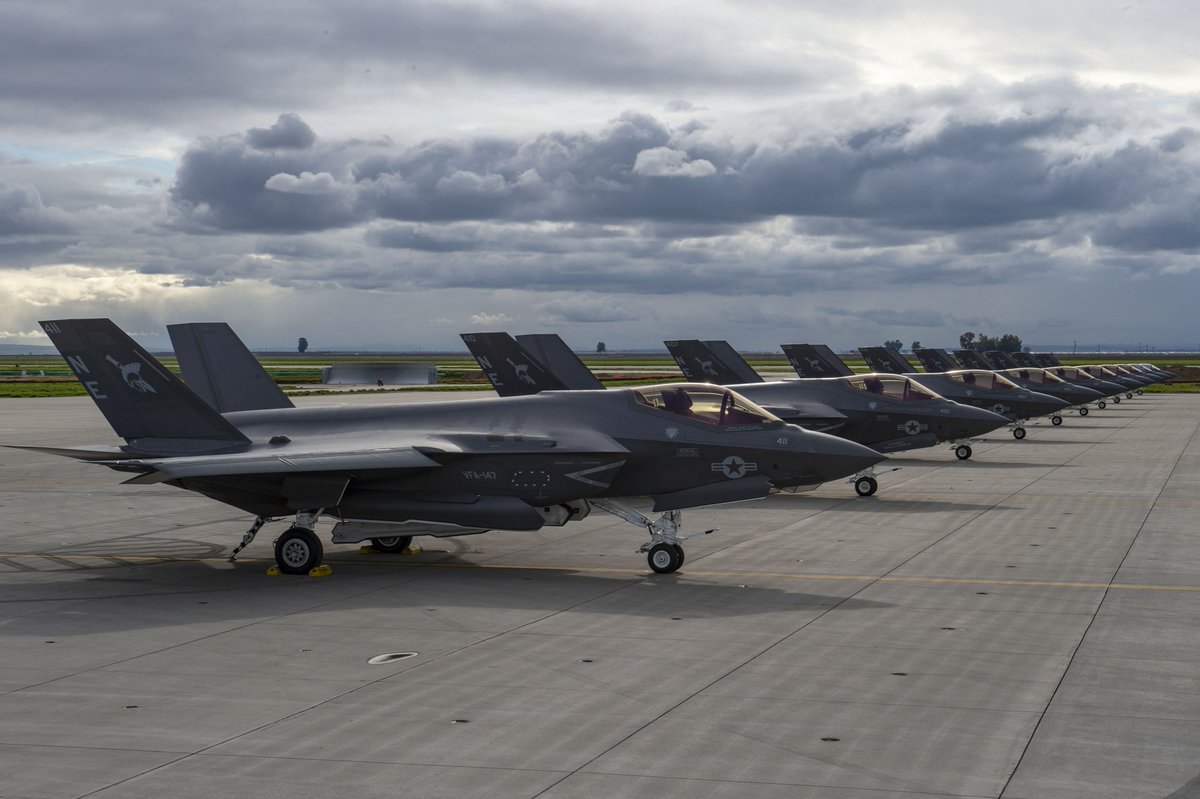
Are you confusing something? The USMC took 3F jets on the USS Essex i.e. fully operational SDD configuration. The only reference I can see to 75% was the Mission Capability i.e availability rate and that is fantastic for a 5th generation STOVL fighter that just spent 8 months deployed at sea halfway across the world from the US while managing to rack up 100+ combat sorties during the process in both Afghanistan and over Iraq/Syria while not missing a single tasking order over the entire time it was called to provide combat support.Philip wrote:The USMC has reportedly achieved about 75% of testing of the F-35 B on its amphib.
F-35Cs began arriving at Naval Air Station Patuxent River in 2011 for testing, and by November that year a JSF had conducted its first ground-based catapult launch from Pax River. In 2012, the final test jets had arrived at Pax River; a carrier-landing assistance tool began ground-based testing, and the first external weapons test flight took place.
In 2013 the first F-35Cs were delivered to a squadron – Strike Fighter Squadron (VFA) 101, the Navy’s F-35C fleet replacement squadron at Eglin Air Force Base, Fla.
On Nov. 3, 2014, an F-35C made its first-ever arrested landing on a carrier, aboard USS Nimitz (CVN-68). The jets then conducted 11 days of sea trials aboard Nimitz, completing Developmental Test-I with Air Test and Evaluation Squadron 23 (VX-23) and meeting all test objectives to prove interoperability between the ship and the planes and carrier suitability for at-sea operations. In September 2015 DT-II was conducted aboard USS Eisenhower (CVN-69).
In September 2017 USS Carl Vinson (CVN-70) conducted its first F-35C at-sea operations, and in December USS Lincoln (CVN-72) hosted carrier qualifications for the Navy’s first nine pilots who were set to conduct at-sea F-35C operations.
In August 2018, Lincoln hosted the first integrated air wing operations, where the ship’s crew launched and recovered, towed and maintained both F-35s and other aircraft types at the same time, rather than carefully handling the new airplanes separately. This integrated air wing operation used airplanes from VFA-125, a fleet replacement squadron, and VFA-147.
In December 2018, VFA-147 began its bid for independence – the squadron reached the safe-for-flight milestone, which allowed it to fly and maintain the planes without supervision from the fleet replacement squadron
GE Aviation has released the design of a next-generation military jet engine to suppliers to begin building the first of a new experimental series designated XA100 by the U.S. Air Force, a company official said March 1.
The variable-cycle XA100 will be offered to replace the Pratt & Whitney F135 in the Lockheed MartinF-35A, if the Air Force creates a requirement. The variable-cycle technology allows GE to adapt the bypass flow around the core, yielding a 10% thrust improvement along with a 25% increase in fuel efficiency compared to a traditional turbofan with a fixed bypass ratio.
Pratt & Whitney is separately designing an alternative variable cycle engine designated as the XA101.
The design release milestone means GE is moving closer to assembling the first of the 45,000 lb-thrust XA100 engine series, said David Tweedie, GE’s general manager for advanced combat engines.
The technology for the XA100 and XA101 entered development in 2007 with the Air Force Research Laboratory’s Adaptive Versatile Engine Technology program. That preliminary design and rig testing phase transitioned to the construction of a proof-of-concept engine after 2012 under the Advanced Engine Technology Development program.
The Air Force launched the follow-on, called the Adaptive Engine Transition Program (AETP), to develop the XA100 and XA101 prototypes in 2016. The “A” prefix in the designation stands for “adaptive,” marking a departure from the Air Force’s F-series designations for military turbofans. The Air Force currently doesn’t have a requirement to re-engine the F-35, but the GE and Pratt prototypes will be sized and designed to integrate into the F-35.
In addition to opening an optional third stream of bypass air, the XA100 also features GE’s advanced composite materials, such as ceramic matrix composites (CMC), in the core of the engine. GE already introduced such materials in the cores of new commercial engines, such as the GE9X. But the XA100 could expand the application of the technology to rotating components. GE already demonstrated the feasibility of CMC turbine planes in the spinning turbine blades of an F414 engine.
“It’s in our toolkit,” Tweedie said.
Last summer, the Air Force also awarded GE and Pratt new contract modifications under the AETP to apply variable-cycle technologies for next generation air superiority aircraft. Tweedie confirmed development activity continues, but the details are not releasable.

GE Aviation has completed the detailed design process of its XA100 engine under the U.S. Air Force's Adaptive Engine Transition Program (AETP), the company announced Thursday.
The latest development means that GE can send engineering drawings out to its supply chain to get engine parts manufactured, according to David Tweedie, general manager for advanced combat engines at GE.
In accordance with AETP requirements, the XA100 ramps up engine thrust by 10 percent while simultaneously improving fuel efficiency by 25 percent over what would typically be possible with a fighter jet engine. The key is XA100's variable cycle that allows for adjustment to the bypass ratio and fan pressure.
"Historically, the big turbofans have a much lower bypass ratio and a much higher fan pressure ratio, and that gives you very high specific thrust," Tweedie said. "For a given technology, you can either optimize for fuel efficiency or thrust depending on what you want the aircraft to do."
Traditionally, he said, militaries have lived with low fuel efficiency in fighters because range was not a major concern during combat. That has been changing in recent years, however.
"What we've seen happen is, with where our adversaries are heading and the improvements in their standoff capabilities, nowadays range is a much more important part for ... fighters than has historically been the case," he said.
The architecture of adaptive-cycle engines such as the XA100 can adjust the bypass ratio to favor either fuel economy, such as when a fighter is in cruise, or thrust, during combat. As such, the decision no longer has to be made between the previous two extremes; the same jet can have the best of both worlds.
Beyond the primary goal of maximizing both range and thrust, the XA100 allows for improved thermal management, which is becoming more important as more powerful aircraft systems generate more and more heat and exteriors are switched from aluminum to composite skins, which Tweedie said act like a Thermos.
According to Tweedie, the improved thermal management is accomplished through two main tactics. GE used more temperature-resistant ceramic matrix composites developed for its commercial engines and added a cool third stream that acts as a heat sink inside the engine. Most modern engines have two airstreams.
Additive technology has changed the way that GE can design engines, Tweedie said.
“Really, we’re limited only by our imagination at this point in terms of the geometries and the design configurations that we’re able to implement on parts in the engine," he said.
While the earlier Adaptive Versatile Engine Technology program was solely about scientific testing to prove out technology, AETP was based on applying that technology to an actual use case by choosing a platform with program requirements and proving that the adaptive engines could be developed under those restrictions and at a workable cost.
Though one of the prime potential uses for the fruits of the AETP is a sixth-gen fighter, Tweedie said the most obvious candidate is the F-35, which is the platform GE has been planning toward.
"The most direct transition for this technology would be the F-35A," he said. "There's talk about spinning off the technology into upgrades for 4th-gen fighters, whether that’s F-15, F-16 or F-22 platforms, and certainly it's under considerations as we think about future platforms.”
The Air Force has spent upward of $3 billion on adaptive engine technology programs so far, with Pratt & Whitney and UTC joining GE in the AETP. However, Tweedie said that GE having been involved all throughout ADVENT and now AETP makes them feel good about where the company stands among its competition.
"We believe with all the work we've done on the ADVENT and early AETP, and the trajectory we’re on," Tweedie said, "We could be ready to support the Air Force for initiation of low-risk engineering and manufacturing development programs, EMD programs, at any point in the future that they’re ready to pull the trigger."
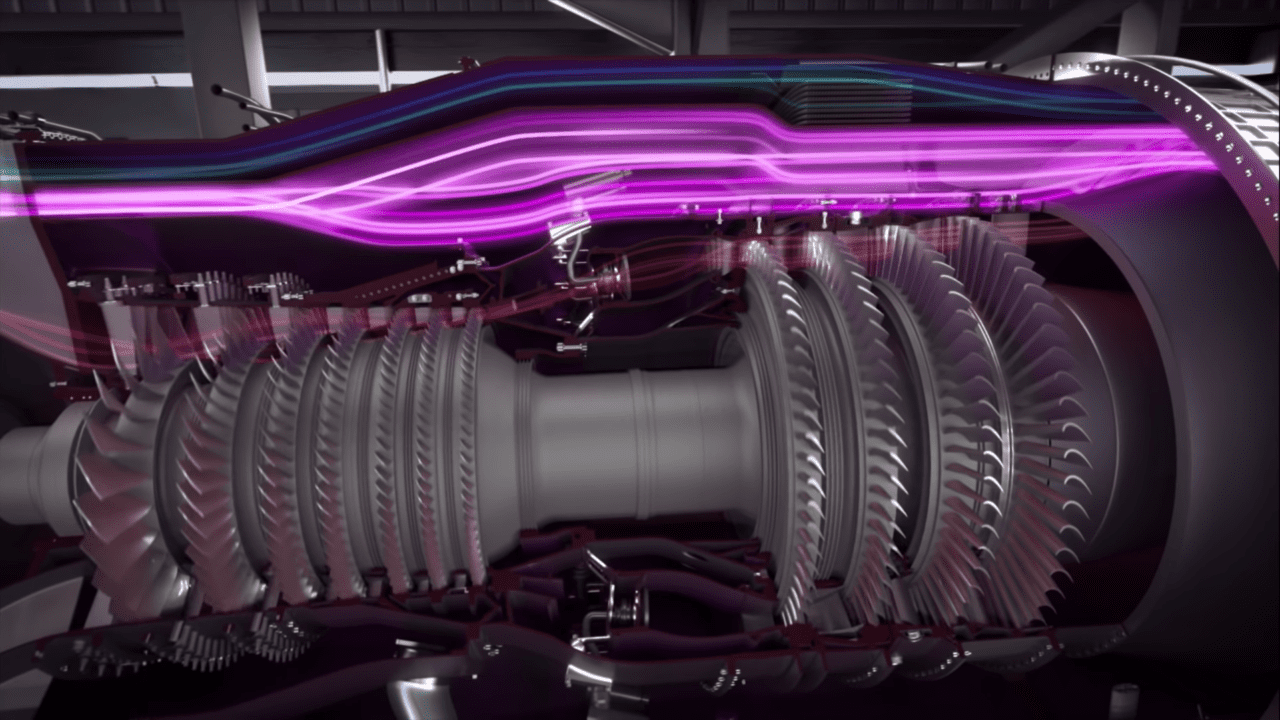
brar_w wrote:More details on EPAWSS ( Eagle Passive/Active Warning and Survivability System) design from a 2015 article from the Association of Old Crows (JED). It essentially retains the all digital architecture found on the export advanced strike eagles (F-15SA and QA) but borrows a lot of the EW components and software from the F-22A and F-35 programs while introducing Gallium Nitride (GaN) based self protection jamming antennas for its active component. Boeing is currently on contract to achieve IOC with the first 24 F-15E's equipped with EPAWSS by late 2021 - Mid 2022 time frame.
https://www.whitehouse.gov/wp-content/u ... _FINAL.pdfIn 2020, the Budget funds an end strength of 2,140,300 active and reserve military personnel, buys 12 battle force ships and two
large experimental unmanned surface vessels, procures 110 fighter aircraft, and modernizes nearly two
brigade combat teams. To prevent the erosion of the U.S. competitive military advantage, the Budget invests in new technologies, including autonomous systems, hypersonics, artificial intelligence, and directed energy. The Budget requests more than $59 billion in research, engineering, and prototyping activities to maintain the military's technological superiority and conventional overmatch against priority challenges..The Budget supports the creation of the United States Space Force (USSF) as the sixth branch of the Armed Forces...
What will be the increase in range in percentage terms for a multirole aircraft like F-35 with the new engine? Of course when it enters the service.brar_w wrote:Detailed Design Complete for GE’s Revolutionary Adaptive Fighter Engine
GE Aviation has completed the detailed design process of its XA100 engine under the U.S. Air Force's Adaptive Engine Transition Program (AETP), the company announced Thursday.
The latest development means that GE can send engineering drawings out to its supply chain to get engine parts manufactured, according to David Tweedie, general manager for advanced combat engines at GE.
In accordance with AETP requirements, the XA100 ramps up engine thrust by 10 percent while simultaneously improving fuel efficiency by 25 percent over what would typically be possible with a fighter jet engine. The key is XA100's variable cycle that allows for adjustment to the bypass ratio and fan pressure.
"Historically, the big turbofans have a much lower bypass ratio and a much higher fan pressure ratio, and that gives you very high specific thrust," Tweedie said. "For a given technology, you can either optimize for fuel efficiency or thrust depending on what you want the aircraft to do."
Traditionally, he said, militaries have lived with low fuel efficiency in fighters because range was not a major concern during combat. That has been changing in recent years, however.
"What we've seen happen is, with where our adversaries are heading and the improvements in their standoff capabilities, nowadays range is a much more important part for ... fighters than has historically been the case," he said.
The architecture of adaptive-cycle engines such as the XA100 can adjust the bypass ratio to favor either fuel economy, such as when a fighter is in cruise, or thrust, during combat. As such, the decision no longer has to be made between the previous two extremes; the same jet can have the best of both worlds.
Beyond the primary goal of maximizing both range and thrust, the XA100 allows for improved thermal management, which is becoming more important as more powerful aircraft systems generate more and more heat and exteriors are switched from aluminum to composite skins, which Tweedie said act like a Thermos.
According to Tweedie, the improved thermal management is accomplished through two main tactics. GE used more temperature-resistant ceramic matrix composites developed for its commercial engines and added a cool third stream that acts as a heat sink inside the engine. Most modern engines have two airstreams.
Additive technology has changed the way that GE can design engines, Tweedie said.
“Really, we’re limited only by our imagination at this point in terms of the geometries and the design configurations that we’re able to implement on parts in the engine," he said.
While the earlier Adaptive Versatile Engine Technology program was solely about scientific testing to prove out technology, AETP was based on applying that technology to an actual use case by choosing a platform with program requirements and proving that the adaptive engines could be developed under those restrictions and at a workable cost.
Though one of the prime potential uses for the fruits of the AETP is a sixth-gen fighter, Tweedie said the most obvious candidate is the F-35, which is the platform GE has been planning toward.
"The most direct transition for this technology would be the F-35A," he said. "There's talk about spinning off the technology into upgrades for 4th-gen fighters, whether that’s F-15, F-16 or F-22 platforms, and certainly it's under considerations as we think about future platforms.”
The Air Force has spent upward of $3 billion on adaptive engine technology programs so far, with Pratt & Whitney and UTC joining GE in the AETP. However, Tweedie said that GE having been involved all throughout ADVENT and now AETP makes them feel good about where the company stands among its competition.
"We believe with all the work we've done on the ADVENT and early AETP, and the trajectory we’re on," Tweedie said, "We could be ready to support the Air Force for initiation of low-risk engineering and manufacturing development programs, EMD programs, at any point in the future that they’re ready to pull the trigger."
The design goal for the XA-100 and XA-101 are 47000 + lb thrust (10% increase over baseline engine) and 30% increase in combat radius (A and C) within the space and weight margins of the F-135/F-35 as it supposed to be ( as a design constaint) a direct insert into the F-35 A and C if green lighted. Depending upon the current engine choice for the B-21, this could be a direct fit there too allowing it to come within 90% of the B-2's max thrust.darshhan wrote:What will be the increase in range in percentage terms for a multirole aircraft like F-35 with the new engine? Of course when it enters the service.
Full budget released and can be accessed using the link below.brar_w wrote:US FY-20 budget request has been released. While the specific Defense budget will be released tomorrow here are the highlights shared -
You don't wait till you loose your ability to be dominant in the air before beginning to invest into the all critical area of Air Superiority which is the base on which the US expeditionary forces operate either on land or at sea. The reason the USAF has the F-22 and F-35 today is because it invested in the ATF enablers going back into the late 1970s and early 1980s. Similarly, if it wants to have to maintain that edge it has to do the same cycle in anticipation for newer threats in the post 2030 period.and they have already started spending on ADAG in spite of having virtual air dominance, and one wonders why they are acquiring 8 F-15EX Advanced eagles.
That is just a phase in the life-cycle and recapitalization of key systems. The US is currently modernizing all the legs of its triad so there is huge R&D expenditure to support the Columbia class submarine, the B-21 bomber, and the new ICBM and Air Launched nuclear cruise missile. Similarly, the US Army too has its 6 priorities nearly all of which are in the R&D phase. Once these programs are developed you will see the ratio be more heavily weighted towards procurement so the current levels are simply a reflection of where some of the big ticket programs are in their life cycle.Procurment budget is just USD 143 Billion and RDT&E is USD 104 Billion, apart from routine stores maintenance. Talk about proper funding.
https://www.militarytimes.com/news/pent ... -missiles/The officials, who spoke to a small group of reporters under Pentagon ground rules that did not permit use of their names or titles, said one project is a low-flying cruise missile with a potential range of about 1,000 kilometers; the other would be a ballistic missile with a range of roughly 3,000 to 4,000 kilometers. Neither would be nuclear armed, the officials said.
The U.S. cruise missile is likely to be flight-tested in August, one official said, adding that it might be ready for deployment within 18 months. The longer-range ballistic missile is expected to be tested in November, with deployment not likely for five years or more, the official said. If Russia and the U.S. were to reach a deal to rescue the INF treaty before August, these projects would not go forward.
The cruise missile recalls a nuclear-armed U.S. weapon that was deployed in Britain and several other European NATO countries in the 1980s, along with Pershing 2 ground-based ballistic missiles, in response to a buildup of Soviet SS-20 missiles targeting Western Europe. With the signing of the INF treaty, those missiles were withdrawn and destroyed.
Yes and so is the TLAM which will get you about 1000+ km when flying low for most of its flight plan so it really depends on what profile the official was speaking about when referring to the 1000 km. Blueprints already exist for the launcher so that is something that could be easily put out and modernized in 18 months with block IV TLAM's pulled right out of the US Navy inventory and modified as desired. The USAF on the other hand is still building up its JASSM-ER inventory and the production is now at its maximum capacity. A ground launched block IV TLAM is also more beneficial in the Pacific scenario where its longer range with higher altitude profiles gives more tactical flexibility. The Block IV TLAM shares nothing with the Gryphon but the one thing it does share is likely the OML and launcher compatibility (with suitable modifications)..Singha wrote:isnt the jassm-ER already a low flying CM with 1000km range? maybe they can cheaply adapt it to a box launcher.

https://www.washingtonpost.com/world/na ... 891a3d16afThe U.S. ground-launched cruise missile is slated for testing in August, just after the treaty formally ends. According to a senior defense official, it will essentially involve putting a Tomahawk missile in a container that could be placed on a ship or in a mobile launcher.
“We’ll actually launch it, and it’ll fly out, and we’ll prove the concept — that you can take a Tomahawk and put it on a truck,” the senior defense official said. Deployment of the mobile missile would require procuring the system and training and equipping the forces that operate it. The official said that could take place within 18 months.
Unlike the small unmanned craft the Navy has experimented with in the past, the 10 large USVs the Navy wants to buy are the size of a small warship. The corvette-sized USVs are being developed to field different types of sensors and, eventually, vertical launch system (VLS) cells for a variety of guided missiles. However, it’s unclear how the unmanned systems will fit into the larger Navy force structure, how they will be measured as part of the battle force, how they would function with other platforms and what requirements for the Navy the systems would fulfill.
Based on Tuesday’s budget submission, it’s also unclear what the hull form for the large USV would be, but the Navy has used images of commercial offshore support vessels used in the oil and gas industry in unclassified presentations. The Navy is also developing a medium USV that would be 12 to 50 meters in length, or somewhere between the size of the service’s 11-meter rigid hull inflatable boats (RHIBs) and the Navy’s Cyclone-class patrol craft (PCs).
On Wednesday, Chief of Naval Operations Adm. John Richardson told reporters the Navy decided to accelerated the large USV’s development and fielding to the operational fleet after experimentation with smaller unmanned surface ships like the DARPA-developed Sea Hunter. He compared the effort to how the Navy experimented with carrier-based unmanned aerial vehicles for a while before quickly moving out on the MQ-25A Stingray that will begin operating off carrier decks in 2024.
“We’ve done some work in working with unmanned surface vessels and have made some progress there, and I would liken it to that. This is the surface vessel version of how we picked up on MQ-25 and are moving very aggressively to get something on deck in unmanned air,” Richardson said.
In terms of developing a large USV, the buy “seems like the next natural step. I want to move this past the [research and development] phase, if you will, and get it out into the operational phase as quick as we can.”
A project birthed in the Pentagon’s Strategic Capabilities Office is getting some serious buy-in from the U.S. Navy, and could yield the world’s first large-scale armed unmanned warship.
The Navy raised eyebrows in its budget rollout Tuesday when it requested $400 million for two large unmanned surface vessels to be purchased in 2020, with 10 total to be purchased across the five-year projection known as the future year defense program. But it was not immediately clear what exactly the Navy was buying two of, since no program of record exists for a large unmanned surface vessel (or LUSV).
Navy officials now say the request is an outgrowth of SCO’s Project Overlord, which first surfaced in 2017 with a draft solicitation outlining a program that would take existing autonomy technologies and integrate them into large and medium unmanned surface vessels with some heady ambitions: an autonomous ship capable of carrying up to 40 tons of payloads, and operate in up to sea-state five independently for 90 days without a crew for maintenance, while following all rules of navigation and obstacle avoidance.
The elevation of SCO’s Overlord program from science project to fast-tracked acquisition reflects both the Navy’s growing confidence in its ability to make the technology work and the urgency it feels to field technologies that can combat a growing threat from anti-access area denial technologies designed to keep the Navy’s powerful strike arm far from the shores of potential adversaries.
The Air Force plans to spend $7.86 billion over the next five years buying 80 F-15EXs, new Eagles to replace aging F-15Cs that service leaders said they did not initially want.
The service will spend $1.05 billion in 2020 to buy the first eight aircraft, and that buy will accelerate to 18 at a cost of $1.65 billion in 2021, with that rate holding steady until 2024, according to new budget documents released Monday afternoon.
The new aircraft will be based on the F-15QA, which Boeing built for the Qatar Emiri Air Force, though it will have USAF-specific capabilities, including the Eagle Passive Active Warning and Survivability System and the Suite 9.1 Operational Flight Program software. The jet will have two seats to be flown by one or two aircrew, and will be multi-role capable, according to the justification document, or J-Book.
Current F-15C/Ds are beyond their service life “and have SERIOUS structures risks, wire chafing issues, and obsolete parts,” the justification states, adding that Air Force readiness goals cannot be achieved because of the aging aircraft’s repairs, modernization efforts, and structural inspections.
The 2020 request includes aircraft and production factory tooling, systems integration lab equipment, technical orders, support equipment, training materials, and other items needed to manufacture the jets. The gross weapon system unit cost is $131.25 million, with $80 million of that solely for the aircraft.
The pre-decisional plan, outlined in the justification, is for the first two aircraft to be taken from the existing production line and delivered two years after contract award for flight testing in 2022. The delivery of the next six aircraft will be expected about three years after contract award.
Maj. Gen. David Krumm, the Air Force’s director of strategic plans and requirements, said last week the F-15EX has about 80-90 percent commonality with the F-15C, and the new jets can use the same ground equipment. Even though the Air Force is bringing on the jet in a new start acquisition program, it will not take money away from the main jet of the future—the F-35, he said.
The Air Force eventually could buy up to 144 of the aircraft, with the buy continuing beyond the end of the FYDP, according to a service official. If the cost continues at the same rate, the new fleet would cost more than $14 billion.
brar_w wrote:Recent pic of the F-117 flying over Nevada..Rumor has it that they are beginning to be utilized as aggressor red forces to simulate LO intruders and strike aircraft..
https://twitter.com/CombatAir_Mag/statu ... 7303721985
Khalsa wrote:brar_w wrote:Recent pic of the F-117 flying over Nevada..Rumor has it that they are beginning to be utilized as aggressor red forces to simulate LO intruders and strike aircraft..
https://twitter.com/CombatAir_Mag/statu ... 7303721985
aha
Thats why they came out of storage. Many watchers have seen them flying and were wondering whats up.
Another concept for NGAD development is being championed by Will Roper, assistant secretary of the Air Force for Acquisition, Technology and Logistics. In a speech to the McAleese/Credit Suisse Defense Programs Conference on March 13, Roper reiterated his call for a creating a “capability pipeline” for future air combat aircraft, with new models introduced every few years. In tandem with his continuous development and fielding philosophy, Roper also wants to incentivize the aerospace industry to change business models. Instead of concentrating resources in margin-rich sustainment, he wants them to refocus capacity on designing and producing new combat aircraft. The goal is to reproduce acquisition strategy at the Pentagon’s Strategic Capabilities Office, which Roper led from 2012-17.
Roper notes that he wanted a program to come out every three years. “We would never get relief on schedule. We would trade performance to hold to schedule. And I love that idea for the Air Force,” he said.
The fiscal 2020 budget proposal seeks to usher in a new era of long-range high-speed missiles. A $10.5 billion plan to develop a series of prototypes for hypersonic boost-glide vehicles has captured most of the attention, but the budget submittal also proposes introducing a wide range of new air- and ground-launched missiles.
A portion of the classified NGAD program has been devoted to developing new weapons to augment the capabilities of existing air interceptor missiles such as the AIM-120C/D and AIM-9X. In fiscal 2020, the Air Force wants to launch the first “scaled flight demonstrations” for a new generation of air-launched weapons, including miniature self-defense munitions and “multishot” air-to-air weapons.
The latter was formerly known as the Small Advanced Counter-air Missile (SACM), but has been renamed within the Air Force Research Laboratory as the Counter-Air Science and Technology (CAST) program. While SACM was focused on developing a missile half the size of the AIM-120 but with similar range, CAST takes a broader approach. Under CAST, the same technology that enables AIM-120-like range in a vehicle half the size can produce a weapon with double the range in a similar form factor.
The Air Force also has revealed plans to greatly expand the offensive reach of the F-35A in stealth mode. The Stand-in Attack Weapon (SiAW) will be integrated in the F-35A’s weapons bay under a five-year $860 million spending proposal. The SiAW adapts the Navy’s Advanced Anti-Radiation Guided Missile-Extended Range munition with a new warhead and fuse combination and the universal armament interface for the F-35A. SiAW would allow the F-35A to attack missile-launching systems at extended ranges while remaining in stealth mode for the first time. The AGM-88 High-speed Anti-Radiation Missile must be carried under the wing.
While it may seem like a normal salvo test as done on the shorter ranged, tactical systems like AEGIS or THAAD, this is much more complicated because the second interceptor has to route (predict) to avoid the the debris from the first interceptor's impact (provided it occurs) while also demonstrating the ability to still see the countermeasures or a *potential* target through that mess. I don't think they plan on launching two targets so the target of interest could be part of the first target's countermeasures or they may just use the sensor data to analyze the expected performance. Either way, quite a bit more complicated than anything they've ever tried before in an operational (OT) setting (with operationally relevant targets, countermeasures and crew TTPs) at those ranges and speeds.The Pentagon is about to attempt what’s likely to be the most challenging test yet of the U.S. military’s ability to shoot down an incoming missile from an adversary such as North Korea or Iran, according to three people familiar with the plans.
The Missile Defense Agency intends on Monday to fire two interceptors tipped with the latest Raytheon Co. warheads within seconds of each other in a test that hasn’t been publicly announced. The first interceptor would attempt to crash into a dummy target representing an incoming intercontinental ballistic missile. The second would use its sensors to detect another ICBM or other countermeasures....
